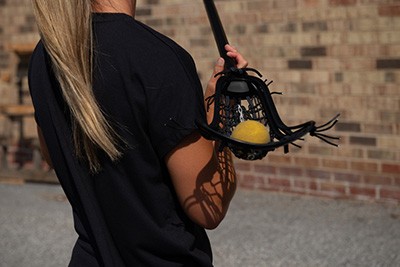Are you a woman looking to get into lacrosse? Or is it time for your current team to brush up on the game rules before your next big match?
Look no further—the 2023 Ultimate Guide to Women's Lacrosse Rules is here!
Every experienced player knows that keeping track of the most recent rulebook can be challenging, and this guide covers all the basics you need to stay informed.
From scoring techniques and passing regulations to field size limitations and defense strategies, our comprehensive guide will give you an insider look at how the game works.
Read on for detailed descriptions of different elements, from equipment requirements to fouls, helpful diagrams, and tips from pro players who want you to succeed. With our aid, mastering women's lacrosse rules has never been easier!
More...
Take Away Key Notes:
Basic Rules of Women's Lacrosse

2023 Update of International Women's Lacrosse Rules
1. Free movement

Women's lacrosse players must now adjust to the new rule involving free movement after the referee blows the whistle.
This will allow for more offensive and defensive opportunities, and a 2-meter barrier is also in effect for fair play.
This change aims to increase the game's speed and discourage pauses or stalling. Furthermore, the added action and higher scores should make women's lacrosse an even more exciting sport.
It might take some time for people to get used to not freezing on the whistle, but with some quick thinking, it can be a great advantage to gain an edge against opponents.
2. Stick placement & draw circle
The stick placement is yet another rule change. The rules implemented this year during the draw are crucial to ensure that player placement is fair and equal. Players need to have their sticks parallel to the centerline for both parties to have an even chance at gaining possession.
Players outside of the draw must remain behind the restraining line until one team gains control, meaning the six midfield players must secure the ball or pass it elsewhere. Once possession is established, all players can resume play as usual.
Those who play in the draw must take extra caution when implementing the new rules, and those beyond the restraining line must remain there until possession is achieved.
It's easy to forget this if you're used to rushing up quickly. However, staying conscious of your movements is important, particularly reaching over the line and moving behind it for a fast break or defensive strategy. Don't let yourself be one of those players caught off guard during the season; practice patience and carefulness.
3. 90-second fast pace rule
A new 90-second shot clock and alternating possession rule have been added to speed up the pace of play.
NCAA Women's Lacrosse Divisions II and III have implemented a 90-second shot clock to keep the game moving faster. Possession will switch to another team if no shot is attempted within the time limit. This allows them to receive an offensive opportunity from resetting the clock with the ball's position in their control. This rule does not grant extended shots for teams who already possess the ball when an alternate possession call occurs.
The shot clock puts a time limit on each team to take their shot and ensure that the game is completed promptly. Alternating possession rules see teams taking turns with possession of the ball for a more even spread of opportunities throughout the game.
With the introduction of shot clocks and possession rules, teams can no longer stall to eat up game time. The average possession duration before a shot attempt in NCAA Women's Lacrosse is below 90 seconds, and the rule will not significantly alter the game's pace. In addition, by ensuring limited stalling, shots are timeless and still eligible for scoring even if taken after the clock has expired.
How to Play Girls Lacrosse?
The game is played on a rectangular lacrosse field, with 12 players from each team, including a goalkeeper.
Before a game starts, a referee must inspect and approve all players' chosen sticks in accordance with the rules established by U.S. Lacrosse and NCAA.
Following a goal, the referee may inspect the scorer's stick to verify that it is by regulations. The goal may be annulled if discrepancies are found, or the opposing team suspects an issue.
Passing the lacrosse ball from one player to another must be done with a throw or a catch - no kicking allowed!
However, the rules of kicking changed in 2016, when kicking the ball are allowed to get out of traffic. Before the rule changed, players kicking the ball would change their possession.
Goals are scored when the ball passes entirely across the goal line between the posts into the netting hung behind it.
The lacrosse team with the most goals at the end of four 15-minute periods wins - but remember, physical contact is forbidden, and it's worthwhile knowing how scoring works before playing. With these basics in mind, you can get out there and enjoy girls' lacrosse!
The Basic Skills of Women's Lacrosse Game
Along with women's lacrosse rules, lacrosse is a game requiring a combination of skills and athleticism. The sport is often considered a fast-paced and skillful game requiring its players to have excellent skills when it comes to gameplay. To be successful, players must master skills such as cradling, catching, checking, cutting, dodging, and passing.
These skills are necessary for playing women's lacrosse successfully to stand possible!
FAQs
What are the basic rules of girls' lacrosse?
The basic rules of women's lacrosse the game are as follows:
Why are women's lacrosse rules different?

Rules of women's lacrosse differ from men's to prioritize player safety and minimize contact risk while still providing an exciting and competitive playing experience.
Additionally, women's lacrosse has fewer players per team, no stick-checking, and more restrictions on body contact.
These rules are designed to make the game accessible for all players so they can enjoy it safely without compromising the integrity of the sport.
How long can you hold the ball in women's lacrosse?
In women's lacrosse, a team has twenty seconds to get the ball across mid-field and another minute to take a shot on the goal circle. During this 80-second window, one player can gain possession of the ball.
Can girls hit in lacrosse?
Compared to men's lacrosse, women's lacrosse does not involve contact and carries very little need for protective gear. The absence of physicality promotes skillful play, creativity, and style.
However, in the rules of women's lacrosse, a skill known as 'checking' is allowed; this involves using your stick to hit your opponent to dislodge the ball.
This tactic is seen frequently in men's lacrosse, yet it must be executed cleanly and without any physical contact or proximity to the head; otherwise, a foul will be called.
Can you rake in girls' lacrosse?
Yes, raking is allowed in the rules of women's lacrosse.
However, when the ball ends up on the ground during the game, players must scoop it up with their stick as if using a shovel to clear snow or dirt.
Can you slash in girls' lacrosse?
Slashing of any kind is not allowed in the women's game of lacrosse.
If a check to the head or any other type of illegal slashing is seen, an immediate whistle and a yellow or red card must be issued.
In the case of illegal contact during a critical scoring play, referees will use a slow whistle; but when the scoring play is over, the appropriate card must still be given.
Is pushing allowed in girls' lacrosse?
Pushing is not allowed in the women's game of lacrosse.
Any contact or pushing considered too aggressive or intentional can result in a yellow or red card being issued to the offender.
What does a green card mean in lacrosse?
Green cards in lacrosse are given when play is held up and the ball is relinquished to the other team.
What does a red card mean in girls' lacrosse?
Receiving a red card in lacrosse will lead to removal from the game, and if it was due to unsportsmanlike conduct, then the player cannot participate in the next game.
What is a purple card in lacrosse?
A purple card is given to outside personnel whose behavior is deemed disruptive by the referee and goes against the respectful lacrosse atmosphere.
Do you have to drop your stick in women's lacrosse?
A female lacrosse player must drop the stick when scoring a goal. A goal will be disallowed if the player fails to drop their crosse right away or if their teammates alter it before dropping it or giving it to an official.
Why is there no checking in women's lacrosse?
Checking is not allowed in women's lacrosse, as the game prohibits any contact with the head or body. There have been no requirements for hard helmets as this version of the game's particular rules is designed to keep players safe.
Can you shoot from anywhere in girls' lacrosse?
No, players cannot shoot from anywhere on the field. In women's lacrosse, shooting is restricted to certain areas around the goal circle. Right behind the goal circle line is an 8-meter arc, considered the 'restraining area,' and a player can only shoot from outside it.
Conclusion
Women's lacrosse is a sport that requires strategy, speed, and stamina. The game is continuous action with few stoppages for timeouts or substitutions.
However, because of the game's speed and lack of protective equipment, women's lacrosse can be dangerous if not played according to the rules.
Players must understand and abide by the strict regulations governing contact to keep the game safe for all participants.
With proper understanding and respect for the rules, women's lacrosse can be an exciting, fast-paced game enjoyed by players of all ages.
